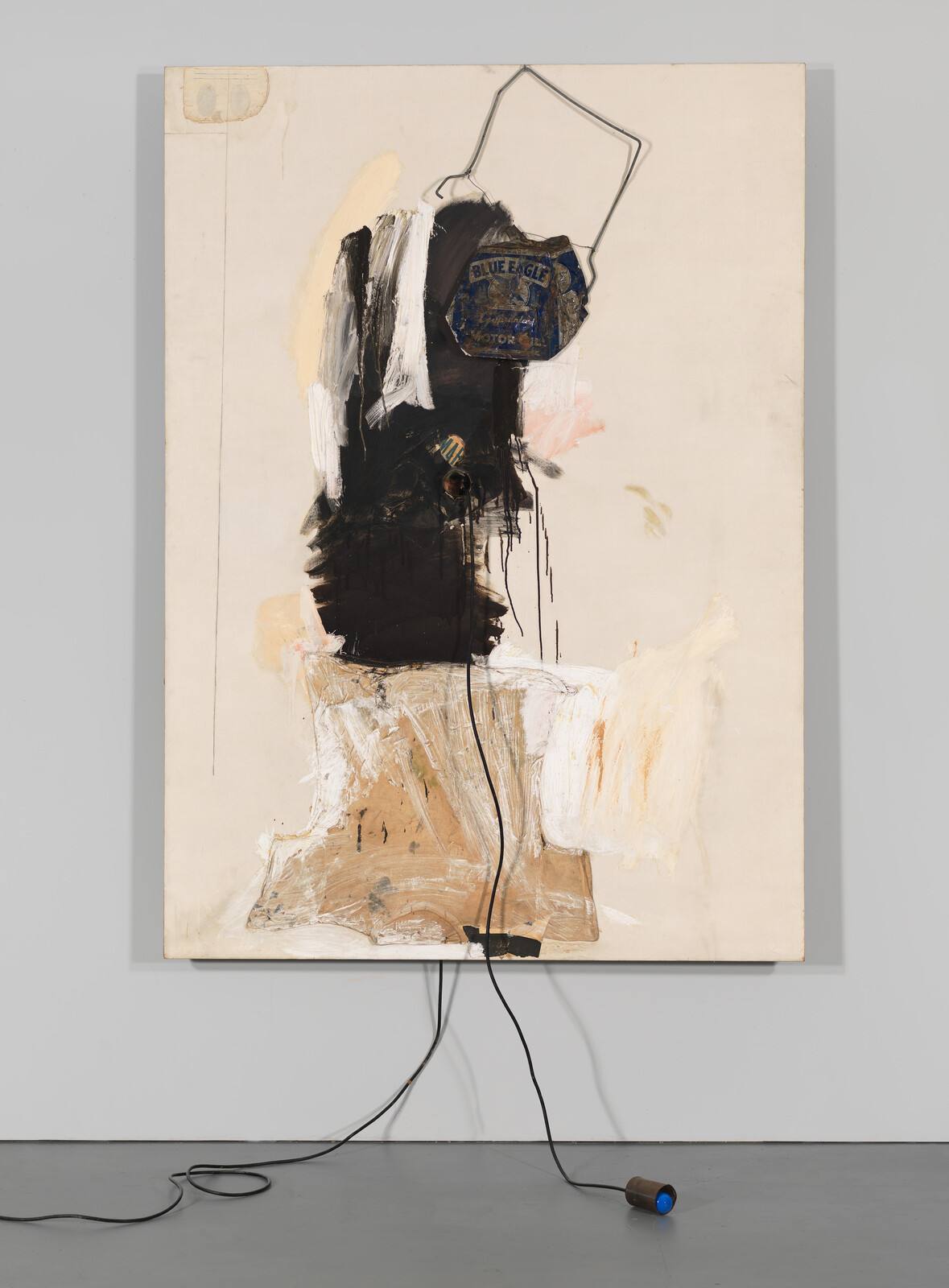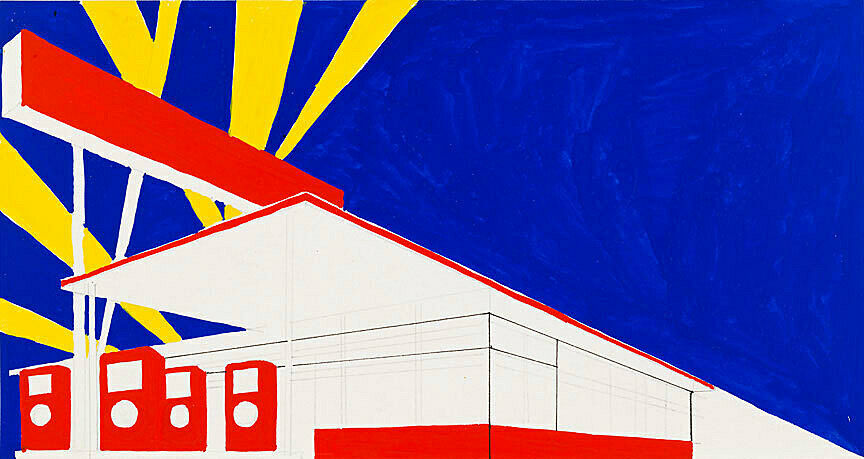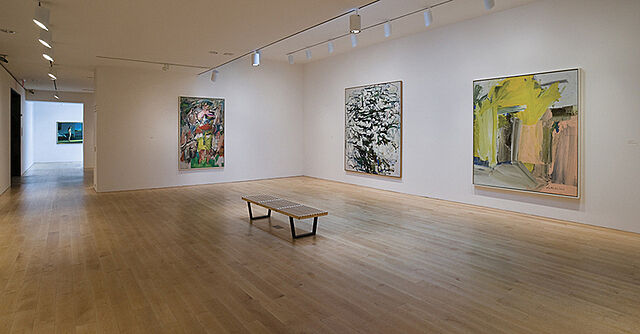In the mid-1950s, Robert Rauschenberg began using materials scavenged from his environment to create hybrids of painting and sculpture which he termed “combine paintings.” As he explained, “After you recognize the canvas you’re painting on is simply another rag then it doesn’t matter whether you used stuffed chickens or electric light bulbs or pure form.” No object was too lowly for his art. The cast-off and discarded were redeemed through his vigorous combinations and overlays, which celebrated memory as well as the raw energy of everyday life. These works were a far cry from the existential drama and painterly distillations of Abstract Expressionism. In Blue Eagle, Rauschenberg affixed a T-shirt and a flattened can of Blue Eagle motor oil to the canvas along with an electric cord that attaches to a tin can on the floor. The blue bulb inside the can lights up when the cord is plugged in. As a result, the combine is literally, functionally connected to the gallery: part of everyday life, not an illusionistic escape from it.
Not on view
Date
1961
Classification
Paintings
Medium
Oil, enamel, cotton T-shirt, metal cans, eye screw, and wires, torn paper, canvas, and graphite pencil on linen with electric cord, can, and light bulb
Dimensions
Overall: 84 × 60 × 5 in. (213.4 × 152.4 × 12.7 cm)
Accession number
2002.260
Credit line
Gift of The American Contemporary Art Foundation, Inc., Leonard A. Lauder, President
Rights and reproductions
© Robert Rauschenberg Foundation / Licensed by VAGA at Artists Rights Society (ARS), New York




